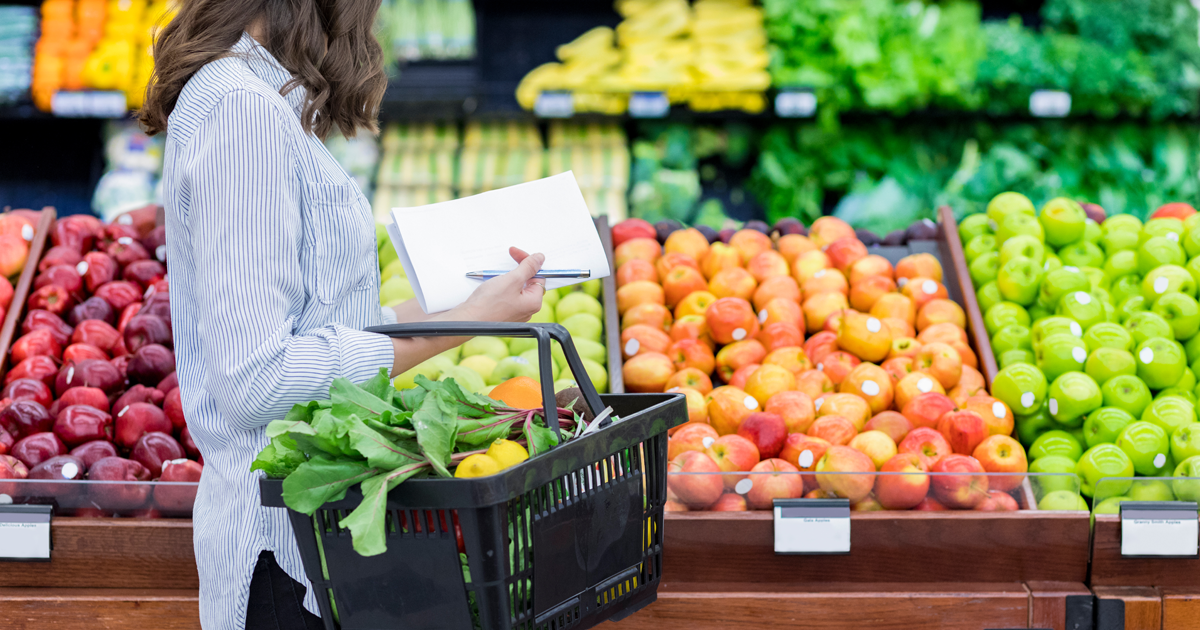
Cancer patients have plenty to think about when they leave the hospital, like when to take their medications, how to care for surgical wounds, when to return for follow-up appointments and how to manage side effects like fatigue and pain. Stocking up at the grocery store is probably the last thing on their mind, and if it is on their to-do list, it’s likely a source of dread. Grocery shopping can become overwhelming, and standing for long periods of time to shop and prepare meals can be burdensome.
But choosing the right foods is important to cancer patients’ recovery. Proper nutrition helps the body maintain a healthy weight, preserve strength and combat certain side effects after treatment. Developing a shopping strategy and bringing a list of nutrient-rich foods may help ease the stress in getting this chore crossed off the list—no matter your cancer type.
The first steps: Make a list in advance, pay attention to labels and stick to the perimeter of the store as much as possible, because that’s where the healthiest options—meat, dairy, produce—tend to be located.
Get personalized nutritional support during your cancer treatment.
Here's a section-by-section tip list for making your grocery shopping experience more effective and efficient, from fresh to frozen:
Produce section
- Choose fruits and vegetables that are in season because they’re typically cheaper.
- Avoid fruits and vegetables that look wilted, dented or damaged. Air exposure over time may cause these foods to lose nutrients.
- Buy organic if you can, but if organic produce is too expensive, make sure you wash your fruits and vegetables well with water and some vinegar.
Meat section
- Buy organic.
- Choose meats and poultry from grass-fed animals, and seafood caught in the wild.
- Order organic meats and cheeses at the deli, or request nitrate-free options.
- Avoid fatty cuts of red meat and increase your chicken and fish options.
Dairy case
- Buy organic, skim, almond or soy dairy products.
- Choose organic, low-fat yogurt, and, when possible, Greek yogurt because it typically contains more protein than other options.
Frozen section
- Look for organic meals.
- Select pre-chopped vegetables that are flash-frozen, so they don’t lose nutrients as quickly as their fresh-produce counterparts.
Central aisles
- Avoid the soda and chip aisle.
- Buy whole-grain breads, not just whole-wheat options.
- Choose healthy oils like olive and canola oils instead of corn and vegetable oils.
- Try a variety of seasonings. Studies have found that spices like ginger and garlic have antioxidant, anti-inflammatory and immune-stimulating properties. Plus, experimenting with different flavors and tastes may enhance your appetite.
- Plan ahead for healthy recipes by stocking up on relevant staples, such as low-fat chicken soup, low-sodium broth, brown rice, raisins, tomato paste and whole-grain pasta.
Also, think about what you may be able to repurpose. If you need chicken breast for a recipe, for example, buy extra and use the leftover to top salads later in the week. And if you have extra mushrooms, consider adding them to the meatloaf or spaghetti sauce you make the next day.
Other tips include using a rice cooker, blender or slow cooker to do the cooking for you whenever possible, or signing up for meal-delivery options like Blue Apron or HelloFresh, or grocery-delivery programs like those offered by Amazon or Walmart. These short cuts are useful if you don’t have the energy to grocery shop, and so you don’t have to worry if your caregiver will pick the right thing.


